This is day 29 of our 61 day. Hauntathon counting down to Halloween. Today’s expert is Tori Elder, owner of Victori Solutions, best known for her work with the Queen Mary Dark Harbor, Dark Horizon, and this year’s Temecula Terror, to discuss running a media night for your haunted attraction.
Listen Here
What Is a Media Night?
Tori: It seems like a simple question, but it is pretty loaded. To concise it down a media night is the opportunity to bring press, bloggers, anyone under the media realm, to come and experience your event or your haunt, hopefully in trade for coverage, or an interest to want to share it for coverage.
How to Figure Out Which Media to Target
Tori: It usually starts with the client. The client will say we want more traditional press, or we want bloggers, or we want influence. Some clients that are smaller, maybe just doing a weekend haunt, or more of a haunted house style versus a festival, they want us to tell them who the press is. We have found it’s an umbrella, you want to balance of everything; you want your traditional, which would be your broadcast, your print, your online news sites. Bloggers, as we know, are huge in the haunt and horror space, I would say that’s how your news can spread fastest. Then thanks to, I would say was picking up before COVID, but after last year, influencers, podcasts, even the TikTok space for some of the younger generations, is really taking off. So, I would recommend you want to get a good amount of a little bit of everybody, if you want to be successful with media nights.
Philip: In my brain, I feel like this is resolving into a food pyramid.
Tori: Yeah, it is like a food pyramid, and it’s really based on what the goal is. So, if your goal is just awareness, I would say you probably want to have 25% traditional press, maybe like 50% of the blogger and those digital sites, and the 25% influencers. However, if you are looking for your ticket sales as the key one, we’ve always see broadcast television always has an increase in click rates and ticket sales, but the bloggers and the influencers spread news so quickly, and so instantly, so I would say 50/50 between those two, and then just pepper in some podcasts and on-air interviews from there.
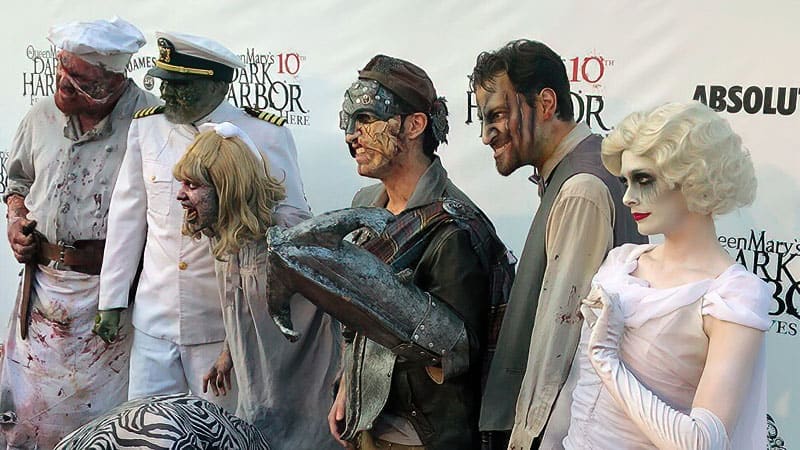
How Do You Figure Out the Goals of the Media Night?
Tori: So, we start having these conversations probably six months out from when they know the event’s going to happen. I know sometimes it’s three months and and you’re like, “we’re going to do it.” Then we have the conversations then. So, it starts with, can we do a media night? When can we do the media night? And what’s our capacity? When we know those three things, then we can start curating our invite list. That invite list will be based on their goal, so we recommend if we’re trying to sell more tickets or it’s a first year haunt, first year haunted house, and we just need to get the word out there– because we know once people know about it they’ll buy the tickets– we’ll make the recommendation of, “then, this is what we recommend, who that invite list is.” Our agency has a media list we’ve curated for years and years, but there’s more popping up all the time.
Philip: So, to reiterate, you and/or the client, the haunt, will figure out what the goals are, and you gave two great examples of goals, ticket sales versus awareness. If you’re younger haunt, it’s more like about awareness, as you grow older it’s about pushing the tickets because everyone already knows the brand.
Tori: Exactly, so we pick our goals, then we take how they can experience their goals, and then we pick what day is that? That can be tricky, depending on the size of your haunt. If you are a bigger haunt, obviously the established Horror Nights, Knott’s Scary Farm, even the Oogie Boogie Bash at Disneyland, we know when those events are happening, it’s pretty similar year after year. So, being respectful of when theirs are, and respectful of haunt bloggers and media that are going to be covering that, keeping that in mind, and then figuring out is this something we can do?
As with Dark Harbor, we’ve always done it opening night, and the press get a special experience ahead of time, and then they get to go and enjoy what the rest of the public. Or, is it something like we’re doing with Temecula Terror this year where it’s a whole day earlier, and seeing what we can do and what’s manageable based on the client’s budget, and then we pick that date, we pick that time, and then we start sending invites.
Philip: So, I like how, when you were looking at making experience, you are very aware of what the calendar is in the area, and so you are not making media choose between one person and another.
Tori: Exactly, and I can’t say it’s more than enough, media are your friends. We want to make sure the media, that you’re going to treat them how you’re going to treat your best friend who’s coming to the haunt. You want them to have the best experience, you don’t want it to be a conflict for their schedules, you want to make sure it’s at a time and they have enough time to make plans to come to your schedule. So, always keep that top of mind, whether it’s five bloggers or if you’re inviting 500, they are your friends, and you want to curate date, time, experience based on what you are your friends would want. If you’re not excited, why would anyone else be excited too enjoy it?
How Do You Figure Out What the Experience Will Be?
Tori: If we can have the media experience everything, and if we can comp it for them, that’s the ideal approach. Dark Horizon opened in 2019 in Orlando, and that media night was different than what we do for their sister haunt Dark Harbor. One, it was the first year, and two, their food and drink was really impeccable compared to some of the other experiences that are out there. So, we wanted to highlight that and do more of a Q&A cocktail session before they got to go in and enjoy the event, complimentary, and allow time for Steve and Charity to talk with everyone and share that experience of what they’re going to go through that night.
I would say budget is something that really holds some things back for clients. So, trying to find a way to give something that’s experiential, that’s not going to financially harm your haunt or your haunted event, but it is also going to increase the reputation and the experience for those that are coming. So, it’s really a melting pot of something, and usually it takes a couple of weeks of conversations and moving things around to figure out what’s right for that specific event.
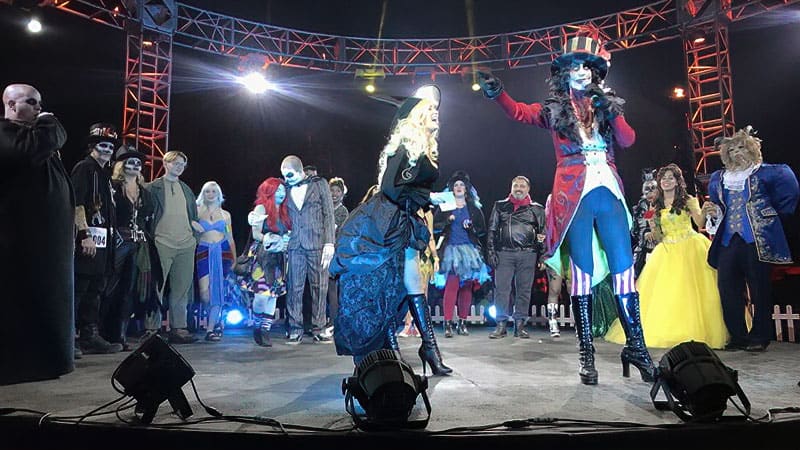
How Do You Make Sure the Media Understand Your Story?
Philip: Of course, you always want the regular customer to understand your story, as storytellers and as haunters that’s a big goal, is for the story to come across. Story drives the experience. But, I think it’s different with media because media, maybe they’re only there for a shorter time than a regular guest would be, and it’s really critical that they understand what they are saying when they are talking to other people about it. So, how are you making sure that the story is conveyed to the media? And you did mention it already a little bit, you mentioned like a Q&A option, you mentioned like the meet and greet, so how are we doing that?
Tori: A little bit of both. Definitely in our invites, think of your imagery when you send it out. I know when we worked with Epic on the 10th year for Dark Harbor, it was 10 Year making sure it’s the Captain, and you connect with the captain, it connects to the ship, and the 10 year. What we’ve found in the past is, everyone’s always requesting interviews. So, if we can set up a time before media night, or during media night, and allow everyone to go and ask their questions, that seems to be most productive for everybody.
So, usually setting side, “okay, work for 45 minutes, the producers, or the monsters, or the creative minds are going to be over here, and you can talk to them, have a complimentary drink with them and have this sit down opportunity. So, you can get that deeper story, deeper coverage.” And then again, it’s all goes back to experience, they have to experience the story for themselves.
When Should a Presentation Be Given During Your Media Night?
Tori: I feel like it’s so different for every experience. For haunts specifically, I always recommend middle or end. The reason being, we want people to be excited when they first come in, again, it all goes back to if you’re not excited, why would the media be excited to be there either?
So, you want them to come up and have the same experience if they were attending. And it’s not going to be so exciting if you sit down for a presentation right away, unless you get to experience it and you walk up, and there’s fog, and there’s monsters, and here’s a cocktail, and look at the celebrities walking the red carpet, it already feeds into the excitement. It’s like a tease, give everyone a little bit of a tease, and then I was making an opportunity.
So, if you really wanted to have a sit down presentation, I’d recommend it after maybe 30, 45 minutes into an experience, so everyone can have a drink, have a snack, unwind take a look, maybe think through what their questions are going to be based on seeing something in person, and then experience it.
How to Interact With the Media Before Media Night
Tori: When we go through it all, we think of all the details of when the event needs to be, how that’s gonna play out, then we create the invites, and we send the invites, and we curate that with the list that we already have or any others that would like to be added.
Then, as those RSVPs come in, we start tracking them. So, we can send what our team calls a media advance, which is similar to what you’re talking about, which has all the details. So, it’s when are they going to arrive, where they’re going to park, who they’re going to check in with, exactly what they’re receiving so there’s no confusion. Our team likes to have all press experience and have the same thing, so there’s no conflict, regardless if they are television or if they’re a blogger or if they’re podcasts, because everyone’s important to us. So, I always recommend everyone gets the same thing. Obviously, television gets lights on in mazes, but that’s just because there’s no on and off, like we get to have with certain YouTube videos.
Then we do our digital press kits, and our digital press kits have all of our photos, press releases, one sheets, all the facts, and it just makes it easier. It makes it easier for you, so you don’t have to consistently send it to hundreds of people all day long. Then it makes it easier for the press, so they can pull what information they need instantly, and they don’t have to wait for us to get back to them.
Philip: So, by the time the press is showing up at this event, they already have all that information in their email, as I’ve received it as well. You have all this information you can pull from, you have all the photos and imagery that you might need to use, you have everything that you need, and then you show up and then can experience it as a regular guest so you can talk about the experience.
Tori: Exactly, and key for those media advances and fact sheets are of course the social media. It’s what we always find, including the social media, including the hashtags, and then sometimes too, we also include certain press like suggested copy. It just makes it easier to as, like I said, media are your friends. I probably will continue to say that, so making it as easy and as enjoyable for them as possible is your key.

Social Media Interactions On, or Even Before, Media Night
Philip: Are you trying to encourage the media to post during the night of with that kind of stuff? And why would you be doing some of this stuff, even if it’s before the haunt is open, in the case of like Temecula Terror?
Tori: That’s a really great question. And we were strategic about when we’re doing like Temecula Terror’s media night. Because it’s a first year event there is going to be an instant push and press coverage, thanks to social media and having social influencers and bloggers onsite. So, arranging that 24 hours advance, we’re going to create FOMO with any of their fans or readers. However, some traditional press or podcasts can take five to seven days to get their coverage up, so we planned it so that first opening week we’re going to get that buzz 24 hours before opening, probably some on opening night, and then through all of opening week. Which then should give the client enough time to funnel in tickets and interests through the rest of October.
How to Balance the Differences in Production Time of the Media
Tori: Carefully.
Philip: Very carefully, it’s almost, I feel like it’s a little spreadsheet, because you have your people that are just influencers, so they are really social media, live action-based, and then all the way up to, broadcast, and then even on the other end of broadcast, there is people like Travel Channel, which require six plus months more and a whole separate filming date. So there’s this timeline.
Tori: There is, and then I think you and I were talking earlier about Excel’s still my best friend. I will forever be using an Excel. Because of the relationship that we have with the press, as a press release goes out most press are asking, “all right, what do we have for media?” if that’s not the case, if you are someone that’s the new haunt, or you haven’t been face-to-face with press before, I’d recommend including details when you start to get responses from your first press release, or when you ask for an RSVP for your media night, and that’s something I think Philip you’ve seen in what we do.
We always ask when that live date is going to be, and then we keep note of that, and our understanding of it. Some bloggers are able to get it up in 24 hours, which is great. Social media, and it’s gonna be live on site, that’s terrific. Others, they do need the time, and being respectful of it and knowing ahead of time, giving them a chance to tell you this is when I can make it go live.
That doesn’t work for you, let them know, see what they can do to move their schedules around. That’s why planning the first date is so important, and then you do have to be flexible and track it in your Excel of when others will be going live with their coverage.
Philip: And what I like, about that too, is that you are keeping that relationship open with the press.
Who Should Thank Who After a Media Night?
Philip: I think this kind of seems counterintuitive, because I feel like people think that we should be thanking the haunt, and I’m not saying that we shouldn’t, but it’s also works the other way around.
Tori: It doesn’t work like that. We thank the press. “Thank you. Thank you for taking your time and choosing this date and this haunt to come and dedicate a post to, or dedicate an interview to.” If a client is newer doesn’t understand, we have to have a big conversation about how important that relationship is, and no one owes the client anything. That’s a key thing you have to keep in mind, when you’re hosting media, whether it’s on the regular run of an event or prior to the event with a media night, the media don’t owe you anything, and it’s their job to give a realistic review. So, making sure they have the best experience possible, starting with you and your conversations, and they feel like they know exactly what’s going to happen, they have all the materials, and they’re going to have an amazing time, that’s what your goal should be when you’re planning out how you’re going to host media.
Philip: Especially if it’s a newer attraction, you want to be able to showcase the covers that people have done, and rather than running around and Googling it, and putting it all the work, if they’ll just give it to you, that’s an extra step you don’t have to do.
Tori: That is so key. I’m so glad you brought that up, Philip, because that is one thing that really helps our team. When our press friends do send us, cause we’ve set that date, and so usually I wake up that morning and the coverage is in my inbox, and I’m so excited because I have it, we can review it and fact check it.
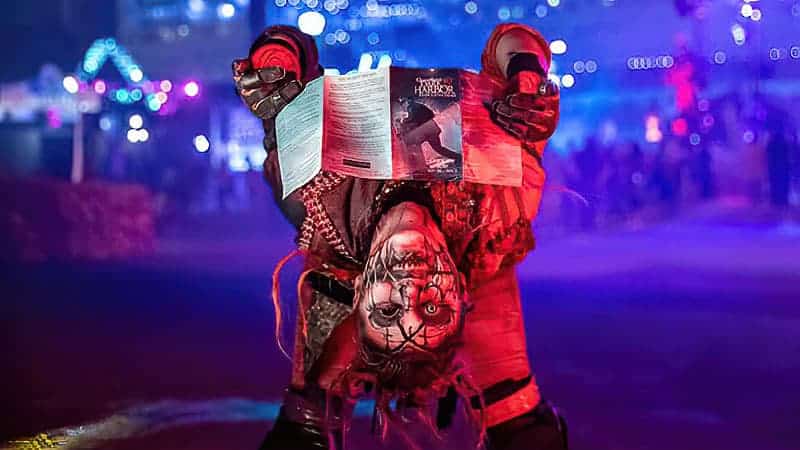
How Does the Fact Check Conversation Flow?
Tori: Most of the time, of course, like Philip, you’ve done your homework, I never have to fact check anything that you do. But sometimes, there’s some information, whether a date got written incorrectly, or there’s just something we have time to edit it.
We read everything that our press friends send us. We really read it, we enjoy it, we take the time, because you took the time to write it. We appreciate all of it. Sometimes what we found the best way to do it is, in the subject line that says urgent or requested edit, and then we just make it easier.
So, I will typically call out where the line is incorrect and I’ll highlight it, and then put this suggested revision, because usually it’s just the name or the title of something, or ticket price or a date, that way they just have to copy and paste. I don’t want to put any more work on what someone’s already taken the time to experience, and then write, and then publish.
So we usually just reply and say, ” this is so great. We can’t wait to share it, but we need you to update this before we can. Bellow is where the error is, and following the correction. If you could just let us know,” and give it some time. Usually it’s like within 24 hours, it’s fixed and we can share it on social.
Why Are Hashtags Important for Media Nights and How to Craft Them
Tori: There’s a couple of reasons. If you are using the hashtag from a media tracking standpoint, we can track and see who’s using it, and then maybe we can get it trending. So then the general public, even if you’re not following that hashtag, can pick it up. Which goes into my second point of hashtag. Hashtags are supposed to be a way of finding something. If you’re on Instagram, if you’re on TikTok and you’re looking up “Haunt”,, or you’re looking up “Temecula”,, you want that hashtag to pop up so people can specifically look for keywords that will direct them back to your haunted experience.
Philip: Can you give me an example of how you might craft one?
Tori: So, recently we’ve been doing two hashtags. So, one being the name of a haunt, and then one that will relate to the haunt. So, temecula Terror, one of their mazes is 301 Hyde Street, we’re doing #HydeOrDie. We’re hoping people that go and experience it can understand that they need to hide, or obviously something’s going to happen in the maze. So, finding something that is fun and playful, but maybe if someone looks up Hyde Street, or someone thinks of the maze, or they look up hide and seek, it will also be populated that way. However, #TemeculaTerror, it says what the haunt is in the hashtag itself. So, we usually come up with, two and hope that those two populate to what our goals are and creating awareness that way.
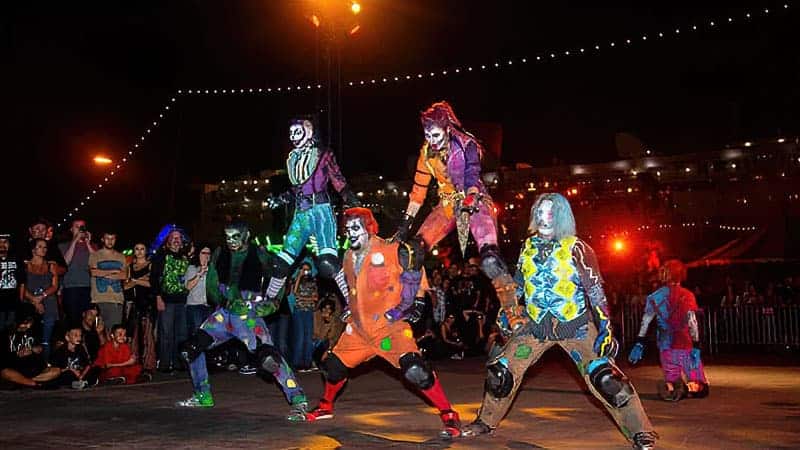
How to Vet People for a Media Night
Tori: I’ll start with vetting, because I think that’s easier than how I’m keeping up. If it’s a blog or a blogger I’m not familiar with, I asked them to share recent coverage or similar coverage of what they would be, so we have an idea of what their coverage style is, and then also their blog.
More established bloggers, if we haven’t heard them, will have a media kit or media deck. If not, then just asking like what their viewership is, just having an understanding of what their level is. I love working with newer bloggers, I think when you have a new haunt and a new blog, the two can blossom together.
I’m definitely one that’s always, ” let’s give everyone a shot.” However, it’s the coverage that is always most important. So, we know they’re going to give so many photos, it’s gonna be so many words, and their coverage is to the tier and the caliber that we want the coverage to be, that’s how we vet it most of the time.
Philip: Like, you are looking at what they are doing, this is what they produce as a person. But then how are you navigating, like all of the other numbers that people throw your way? Because metrics are like different on every platform, but what do you look for?
Tori: So, I also have a little cheat sheet because I have a media monitoring platform. So, even what you said to me, I also cross reference it with what our media monitoring platform has. I think a big one, imbedding your social media, because we’re in the world of where people can buy followers and buy likes, check the engagement. What we always look for based on how many followers you have, we want it to see at least 8% to 12% engagement, and that includes, likes and comments on those pictures. That’ll tell us that is relevant. You don’t want someone who’s got 30,000 followers, but only gets 30 likes, that tells you maybe there’s something off here.
When it comes to podcasts, we are looking for new viewers and returning listeners. What are those numbers at constantly? Is it constant? Is it growing? And then same with bloggers. We like to see the unique viewers per month and really that it’s relevant. If someone hasn’t posted since last Halloween, I’m not sure it’s going to benefit the haunt as much as someone who has been posting your round. If you have a post from last week or you have a post from two weeks ago, and then two weeks prior, to me that means that you are in the space, that you are educated, that your review is going to correlate with your readers, or you have readers because you’re constantly posting. So, in the vet process, it’s the date, the viewership, and then really the coverage, is the coverage going to be valuable if the other two check boxes?
Philip: I think a lot of this, you are kind of trusting what they’re telling you, because there’s not, even from a backend point of view, sometimes I don’t even know because iTunes treats things differently than other platforms do, and they count different things as plays.
Like sometimes if it just auto downloads for a subscriber, even if they don’t actually play it, it counts as a download. To underline here, you are trusting what they are telling you when you ask them, and you’re like, what are your downloads? What are your viewers and whatnot? Cause some of that stuff, it’s not, even with software, it’s not transparent, so you’re kinda like just trusting what they say?
Tori: A little bit, I would say it is, definitely, and then our clients are trusting us too, which is why you have to vet the other two. Look into, if it’s a podcast, does the podcast have social media? What is their social media looking like? How have they posted recently? Do a Google search, is there a name being popped up in other related haunts? Are they covering other haunts? I almost feel like a detective sometimes when it comes to a new member of the press. I appreciate when it is someone that’s new and says, they’re a new blogger, they’ve just started this, and if they could be transparent from the beginning and we can negotiate what that coverage is going to look based on the value of the coverage we’re getting.
Because of the many years I’ve had in haunted media, the reporting system Aster helps me a lot. For Temecula Terror I have to Temecula Terror as an alert, we use Critical Mention so I can see how many views and I can see what that PR value is. So, that also helps me. If you don’t get a return invite or the relationship isn’t necessarily the same after I trusted what you had sent me, it’s because I saw the numbers after you went live, and then it didn’t align with what you said it was going to be.
Those are unfortunate things that happened, but that’s another way. Sometimes the vetting is after the story’s gone.
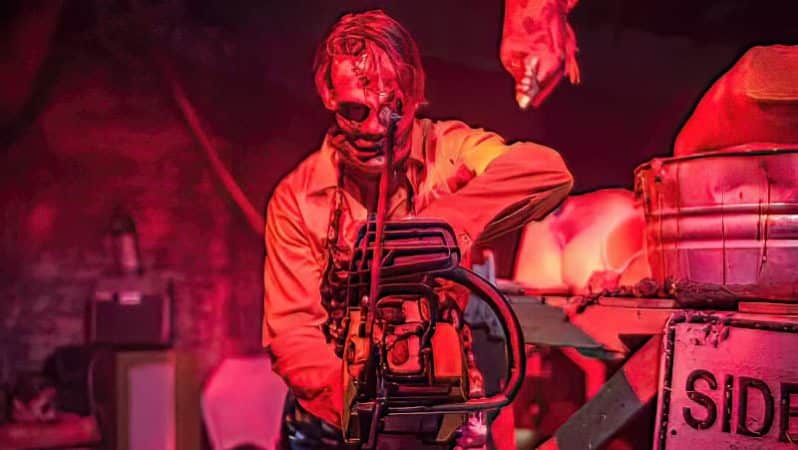
Podcasts Are Harder to Vet, and a Growing Medium for Media
Philip: It’s a lot more work if you don’t vet people, it’s a lot more. For me it feels a little weird. Being a podcast we’re not necessarily suited for social media, so it is difficult for us to maintain a presence because, especially Instagram is really big in haunts, but the audio medium is imageless.
So, it’s a difficult line for us to thread, because essentially, we are having to make a social media account that is not what you are getting. You know, if that makes sense, because I’m having to take photos and do all this extra stuff for like our Instagram stories, but you can’t see it when you’re listening to the podcast.
Tori: Yeah, it’s difficult, and I have a feeling metrics are going to start increasing and being better for the media side. Podcasts are growing and they are becoming a really popular medium.
And you’re right, it’s something that we don’t really have nailed down. So it is individual research. I listen, and if it’s a new podcast, I listened to past two podcasts.
Philip: 50% of podcasts have less than 30 views per episode, and then it spikes at the top 3%, 5%, that have more listeners than CNN, basically. But, the production quality varies wildly.
Tori: You really hit the nail on the head with it. Any haunt, you need to do your research, pay attention to those that are reaching out, if you know them or if you don’t, see what they’ve been up to, especially this past two years, listen to what they’ve been doing. You’re right, Philip, some just copy and paste what we send out, which sure, maybe you want that for some awareness, but you also want someone to actually talk about their experience, you want the real reviews, you want to know that it’s going to be a production value that is meaningful and valuable for your haunt. Because, audience members that are listening in are gonna pick up on, is this an ad and tune out, or is this someone that’s actually talking about something and it’s an organic conversation that they can connect with?
